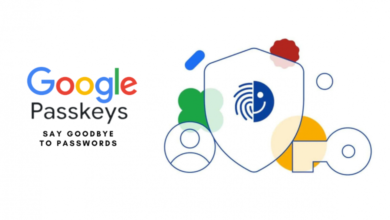
Social Engineering and How to Protect Against It
In today’s digital age, many threats to our privacy and security stem from sophisticated hacking methods like malware and phishing. But there’s a far older and more insidious tactic at play: social engineering. This technique doesn’t exploit software vulnerabilities—it exploits human vulnerabilities.
What is Social Engineering?
Social engineering is the art of manipulating people into giving up confidential information or performing actions that compromise their security. Rather than attacking a system directly, a social engineer preys on trust, fear, urgency, or curiosity to deceive people into making mistakes.
The term might sound technical, but you’ve probably heard of some of the most common forms of social engineering, like phishing emails or fraudulent phone calls. A social engineer may impersonate a trusted figure or an authority, create a sense of urgency, or use personal information found on social media to gain trust.
Here are some common tactics used in social engineering:
- Phishing: Attackers send fraudulent emails that appear to come from legitimate sources to trick recipients into sharing sensitive information like login credentials or credit card numbers.
- Spear Phishing: A more targeted form of phishing where attackers tailor their messages to specific individuals or organizations, often using personal information to make the scam more convincing.
- Pretexting: Here, the attacker creates a fabricated scenario (or pretext) to engage a target and gain access to sensitive data. For instance, pretending to be an IT professional asking for login credentials.
- Baiting: This involves offering something enticing, such as free software or music downloads, which, when accessed, infects the user’s device with malware.
- Quid Pro Quo: The attacker promises a service in exchange for information. For example, offering free technical support in exchange for login credentials.
- Tailgating: This is a physical form of social engineering where the attacker gains entry to restricted areas by following an authorized individual through secure doors.
Real-World Examples of Social Engineering
1. The 2016 DNC Hack (Spear Phishing)
In one of the most significant cyber incidents in modern political history, Russian hackers used spear phishing to compromise the Democratic National Committee (DNC) during the 2016 U.S. election. Hackers sent emails disguised as security alerts from Google, instructing recipients to change their passwords. One such email was sent to John Podesta, Hillary Clinton’s campaign chairman. Thinking it was legitimate, he provided his login details, allowing attackers to gain access to his emails, which were later leaked and influenced public perception during the campaign.
2. The Target Data Breach (Vendor Exploitation via Phishing)
In 2013, Target experienced one of the largest data breaches in retail history, affecting over 40 million credit and debit cards. The attack was initiated through a third-party vendor, Fazio Mechanical Services, which had access to Target’s network. Hackers sent phishing emails to Fazio employees, tricking them into downloading malware. Once inside, attackers used the compromised credentials to access Target’s network, installing malware on their point-of-sale systems and stealing payment card data from millions of customers.
3. RSA Security Breach (Phishing via Fake Job Ad)
In 2011, RSA Security, a major player in cryptographic software, was hit by a social engineering attack that compromised their SecurID tokens, used by millions of users for two-factor authentication. Attackers sent phishing emails with the subject line “2011 Recruitment Plan” to RSA employees. The email contained an Excel spreadsheet embedded with a malicious file. When an employee opened the file, it installed malware, granting attackers access to RSA’s systems. This breach was later leveraged in attacks on companies like Lockheed Martin.
4. Ubiquiti Networks (CEO Fraud/Business Email Compromise)
In 2015, Ubiquiti Networks lost $46.7 million in a social engineering attack known as CEO fraud or business email compromise (BEC). Attackers impersonated Ubiquiti’s CEO using a lookalike email address and sent emails to employees in the finance department requesting urgent wire transfers. The attackers researched the company beforehand, making the fraudulent emails highly convincing. Ubiquiti managed to recover about $8 million, but the incident highlighted the effectiveness of this type of attack.
5. Sony Pictures Hack (Phishing & Insider Tactics)
In 2014, hackers infiltrated Sony Pictures’ network, leaking confidential data, including unreleased films, employee information, and executive emails. The attack, allegedly carried out by North Korean hackers, was primarily driven by a phishing campaign targeting employees. Attackers sent malicious links that, when clicked, installed malware on Sony’s systems. This breach gained significant attention because of its ties to the controversial movie The Interview, which depicted the assassination of North Korean leader Kim Jong-un.
6. Robin Sage Experiment (Fake Persona on Social Media)
In 2010, security researcher Thomas Ryan created a fake profile on social media platforms like LinkedIn and Facebook, posing as a young cyber threat analyst named “Robin Sage.” Despite having an implausible background and credentials, “Robin” quickly gained over 300 connections from defense contractors, military personnel, and security experts. Many of these connections shared sensitive information with the fake profile, demonstrating how easy it is to manipulate people through online personas.
7. The “Microsoft Tech Support” Scam (Quid Pro Quo)
One of the most prevalent scams involves attackers calling individuals, claiming to be from Microsoft’s tech support. They inform the victim that their computer is infected with malware and offer to fix the issue in exchange for remote access to the computer. Once the attacker gains access, they may steal sensitive data, install malware, or demand payment for “services” rendered. This scam preys on non-technical users who may not recognize the red flags of an unsolicited tech support call.
8. Matt Honan’s iCloud Hack (Pretexting)
In 2012, tech journalist Matt Honan was hacked through a combination of pretexting and technical weaknesses in Apple and Amazon’s systems. Attackers called Amazon customer support, pretending to be Honan, and convinced them to add a fake credit card to his account. Using the information from Amazon, they then called Apple support to reset Honan’s iCloud password, gaining access to his entire digital life, including his emails, social media accounts, and devices. The attackers deleted all of his data, proving the devastating effects of social engineering.
Why is Social Engineering So Effective?
Social engineering attacks are effective because they exploit basic human psychology. Here are a few reasons why people fall for them:
- Trust: Humans tend to trust authoritative figures, whether they appear as a company executive, a tech support agent, or a police officer.
- Fear: Attackers might use fear as a tactic, such as suggesting that failure to respond will result in loss of funds, account suspension, or legal consequences.
- Urgency: When faced with a time-sensitive situation, like a “critical” software update or an impending financial loss, people often act without thinking.
- Curiosity: Social engineers capitalize on human curiosity, often baiting users with sensational headlines or hidden information.
How to Mitigate Social Engineering Attacks
While social engineering attacks are sophisticated, individuals and organizations can take several steps to protect themselves. Below are effective strategies to mitigate the risks.
1. Education and Training
The most important defense against social engineering is awareness. Organizations should provide regular training to employees, educating them about the latest social engineering tactics. Individuals should stay informed and skeptical of unsolicited requests for sensitive information.
2. Implement Strong Security Policies
Organizations should establish clear guidelines around the sharing of information and what constitutes acceptable use of IT resources. Security policies should include:
- Two-Factor Authentication (2FA): Even if a social engineer gets hold of login credentials, 2FA adds an additional layer of security, requiring users to verify their identity through another method, like a phone code.
- Least Privilege Principle: Limit access to sensitive information and systems only to those who need it. The fewer people who have access, the harder it is for an attacker to succeed.
- Incident Response Protocols: Have clear procedures for handling potential breaches or suspicious activities. Employees should know how to report a phishing email or other suspicious communication.
3. Verify Identities
Before giving out sensitive information, always verify the identity of the person or entity requesting it. Whether the request comes via email, phone, or in person, take a moment to check their legitimacy. For example:
- Verify email addresses or domain names to ensure they come from the legitimate source (e.g., john@companyname.com vs. john@compnayname.com).
- Call the person directly using a trusted phone number to confirm their request.
4. Utilize Security Tools
There are several tools available to protect against phishing and other social engineering tactics:
- Anti-Phishing Tools: Many browsers and email providers have built-in anti-phishing tools that can detect and block malicious content.
- Spam Filters: Strong spam filters can help reduce the number of phishing emails reaching your inbox.
- Security Awareness Platforms: Tools like KnowBe4 and PhishMe simulate phishing attacks, allowing employees to practice identifying and reporting suspicious communications.
5. Monitor and Update Security Systems
Organizations should regularly update software and security systems to fix any vulnerabilities that attackers could exploit. Monitoring network activity can also help detect unusual behavior that may be the result of a social engineering attack.
6. Encourage a sceptical Mindset
Individuals and employees should be encouraged to adopt a healthy level of skepticism, especially when they encounter unexpected or unsolicited communication. Ask questions like:
- “Is this request reasonable?”
- “Does this person really need this information?”
- “Does this message make me feel unusually pressured?”
Social engineering is one of the oldest and most effective forms of cyberattack because it targets the hardest aspect of security to defend: human behavior. By understanding the tactics social engineers use and adopting a proactive defense strategy, individuals and organizations can reduce the risk of falling victim to these attacks.









